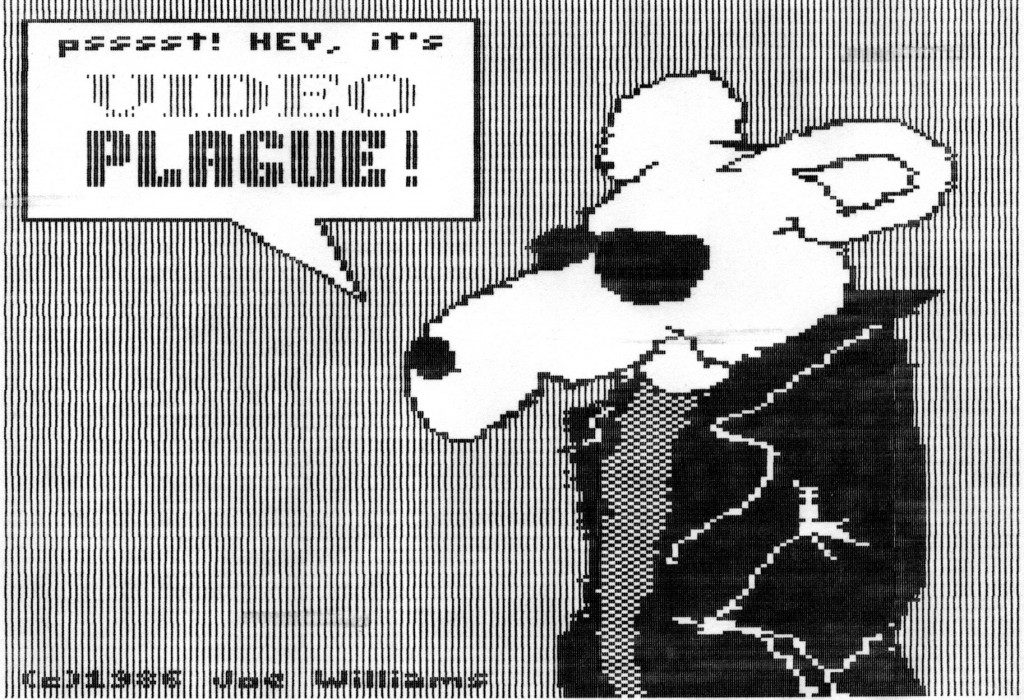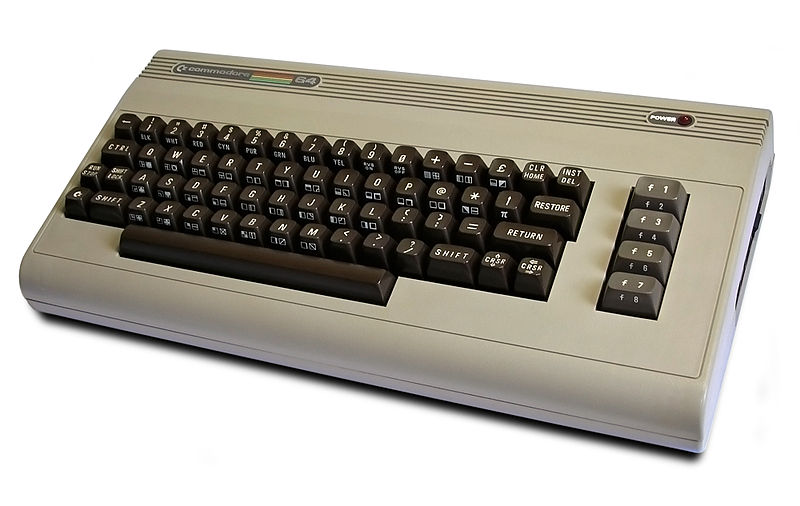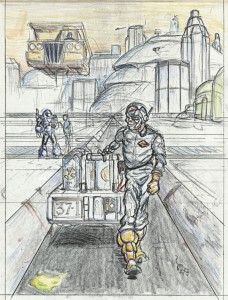The best-selling personal computer model of all time. It was cheaper, faster and better than the Apple computers out at the time. Why these guys aren’t ruling the world is beyond me.
Today, I continue my exploration of the digital versus analog debate with my own experiences with computing. So if your eyes haven’t rolled up into your head, come on along!
Back in the early ’80s I was attending art school, and I must say, I wasn’t the greatest art student. I certainly wasn’t the worst of the bunch. I could draw which, what may be surprising, a lot of people in art school could not. I was pretty good with black and white media, but I struggled mightily with some of the wet and most of the color mediums. I am barred by law from purchasing and using pastels, for instance. I was amazed at the people in school who could render the crap out of things as if they were born with a palette and brush in hand. Their designs may have been simple, but the finishes were gorgeous whereas my designs were byzantine and the color was applied in a half-hearted manner as not to wreck that good drawring. It tormented me, and I procrastinated like crazy. Had these people come by their ability intuitively? Did they have a better eye than I? Were they more patient? More observant? More talented? Had better hand/eye coordination? What the hell was I doing there?
 Further exacerbating my procrastination problem was my brother Brian Bubonic’s purchase of a Commodore 64 in the early ’80s. Brian didn’t take any half measures and went all out. He bought the Smart Hard Drive (as opposed to everyone else’s dumb ones), a dot matrix printer with the special DIP switch card to make it function with the Commodore equipment and a boatload of games. I kicked in some dough and bought a digitizing tablet called The Animation Station. It was a competitor to the Koala Pad. The modern equivalent would be Wacom Tablets. It was a drawing pad, and there was a promise of forthcoming software with which animations could be created, but as far as I know that software never materialized.
Further exacerbating my procrastination problem was my brother Brian Bubonic’s purchase of a Commodore 64 in the early ’80s. Brian didn’t take any half measures and went all out. He bought the Smart Hard Drive (as opposed to everyone else’s dumb ones), a dot matrix printer with the special DIP switch card to make it function with the Commodore equipment and a boatload of games. I kicked in some dough and bought a digitizing tablet called The Animation Station. It was a competitor to the Koala Pad. The modern equivalent would be Wacom Tablets. It was a drawing pad, and there was a promise of forthcoming software with which animations could be created, but as far as I know that software never materialized.
 The above drawing was done after I got out of art school, but gives a pretty good idea of what the Commodore and the digitizing tablet would get you. The image was in color on the screen, but this is one of the surviving dot matrix printouts I made. It looks incredibly crude now, but back then, it seemed unbelievably ripe with possibilities. You could do type, and change color instantly. I thought it would be a great sketch/thumbnail tool for working up color ideas and creating variations very quickly. Jumping Jehoshaphat, I was having fun working in color!
The above drawing was done after I got out of art school, but gives a pretty good idea of what the Commodore and the digitizing tablet would get you. The image was in color on the screen, but this is one of the surviving dot matrix printouts I made. It looks incredibly crude now, but back then, it seemed unbelievably ripe with possibilities. You could do type, and change color instantly. I thought it would be a great sketch/thumbnail tool for working up color ideas and creating variations very quickly. Jumping Jehoshaphat, I was having fun working in color!
But how do I show my computer art outside of black and white prints. I thought of taking pictures from the screen which was a small television.
Well, it didn’t really work out – I never used it as a sketch tool, but that began my thought process of how I might use computers to do artwork.
I also did some programming in BASIC; wrote some teleplays and comic book scripts with a couple of different word processor programs, and wasted a lot of time playing games like Raid on Bungeling Bay and Bruce Lee. That Bruce Lee song has been running through my head for years!
Commodore 64 Photo by Bill Bertram





